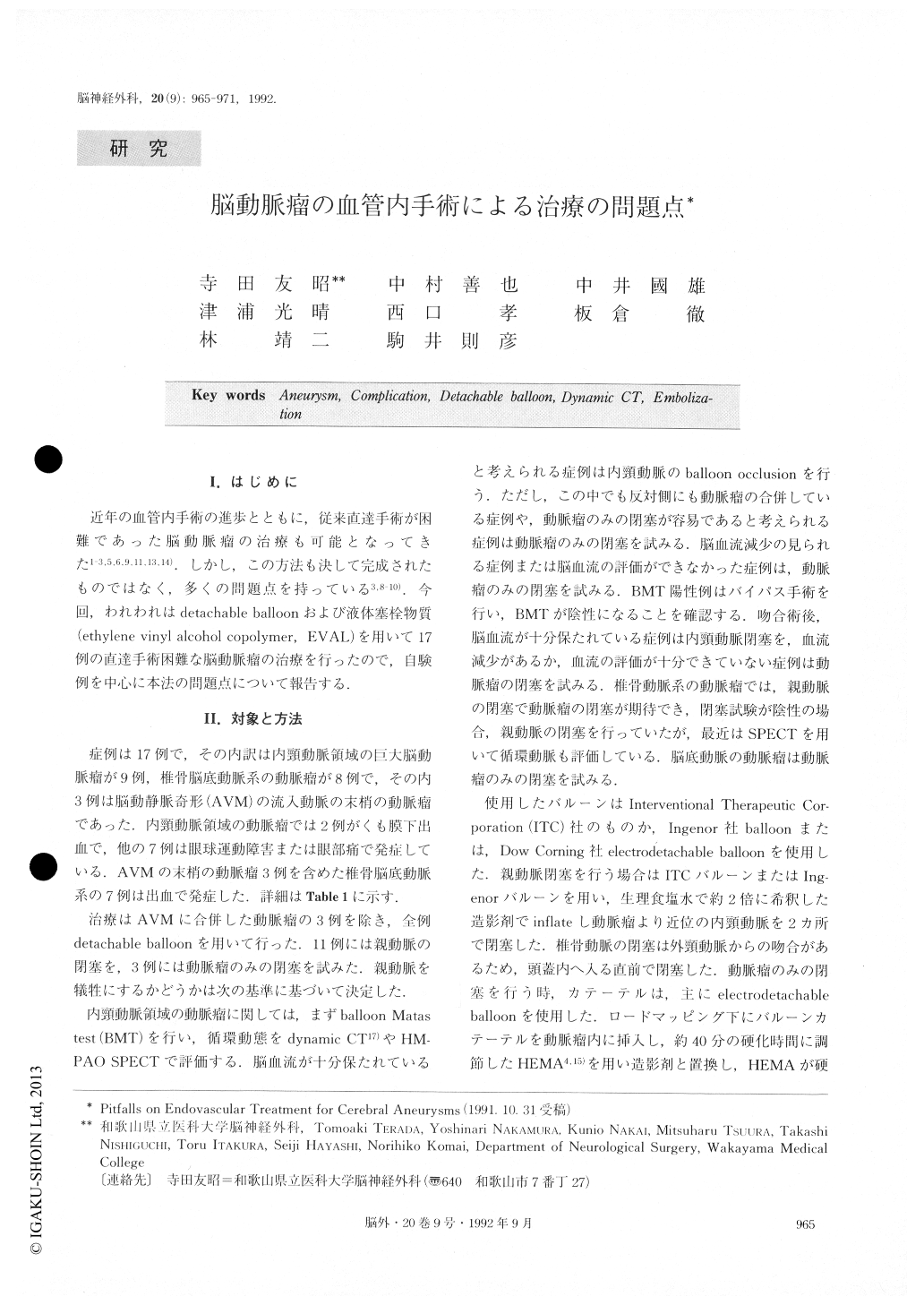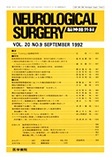Japanese
English
- 有料閲覧
- Abstract 文献概要
- 1ページ目 Look Inside
I.はじめに
近年の血管内手術の進歩とともに,従来直達手術が困難であった脳動脈瘤の治療も可能となってきた1-3,5,6,9,11,13,14).しかし,この方法も決して完成されたものではなく,多くの問題点を持っている3,8-10).今回,われわれはdetachable balloonおよび液体塞栓物質(ethylene vinyl alcohl copolymer, EVAL)を用いて17例の直達手術困難な脳動脈瘤の治療を行ったので,自験例を中心に本法の問題点について報告する.
Seventeen cases of unclippable aneurysms were treated by the endovascular balloon technique. Nine of them in-volved the anterior circulation, and eight involved the posterior circulation. Eleven of them were treated by pa-rent artery occlusion with detachable balloons. Three were treated by endosaccular balloon embolization, and three cases combined with AVMs were occluded using ethylene vinyl alcohol copolymer (EVAL) including feeding arteries of the AVMs. Embolic complications occurred in one case of an IC bifurcation giant aneurysm treated by parent artery occlusion. Ischemic complica-tions also appeared in two cases of aneurysms treated by endosaccular balloon embolization. In one case, the thrombus in the aneurysm propagated into the parent artery and occluded it later. In another case, the dis-placed balloon had obliterated the parent artery 6 hours after the embolization. Parent artery occlusion is a safe way to treat internal carotid giant aneurysms. However, endosaccular treatment still has some problems, i.e., 1) maintaining the balloon's position to preserve the parent artery, 2) balloon migration into the clot, 3) rupture of the aneurysm during or after treatment. Our studies indi-cate that endosaccular balloon embolization is still a high risk procedure and should be used only in selected cases, until new embolic agents, such as detachable coils, be-come available.

Copyright © 1992, Igaku-Shoin Ltd. All rights reserved.


